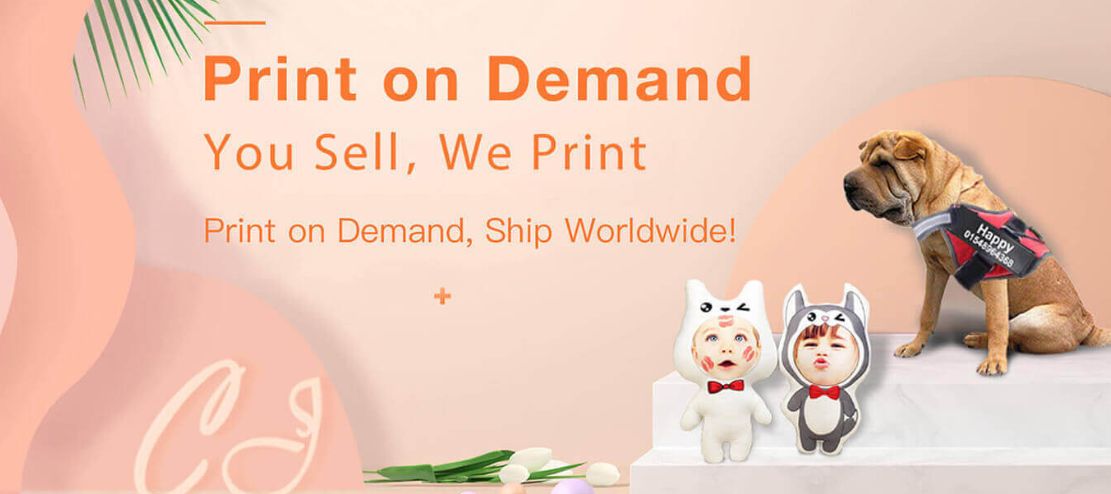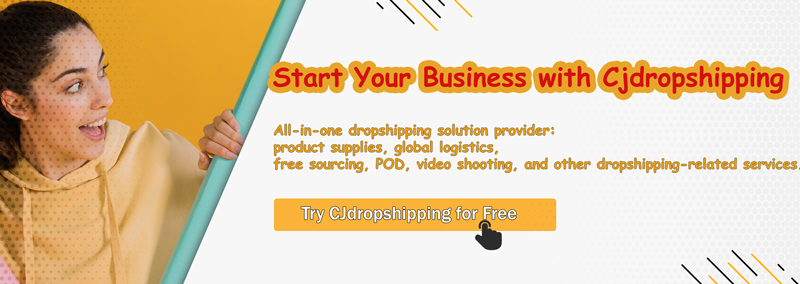CJdropshipping has emerged as a one-stop dropshipping platform that combines product sourcing, order processing, and fulfillment. By 2025, it boasts 50+ global warehouses (US, EU, China, Singapore) and integrations with major e-commerce platforms. This means CJ can source items directly from factories and ship them quickly – a contrast to marketplaces like AliExpress where each vendor handles shipping. In this guide we’ll cover five strategic tips for using CJdropshipping in 2025, especially for sellers targeting the U.S. market. Rather than step-by-step setup, these tips focus on best practices like leveraging CJ’s US warehouses, smart product research, branding with custom packaging, automating your store, and controlling inventory to maximize profit.
1. Speed Up Delivery with U.S. Warehouses
Fast shipping is a make-or-break factor in e-commerce. CJdropshipping’s expansion into the US market is a game-changer: it now offers inventory in U.S. warehouses that can reach American customers in 3–6 days instead of weeks. This shrinks the gap with Amazon’s Prime delivery and meets the 2-day fulfillment requirement on platforms like TikTok Shop. By keeping stock in U.S. warehouses, CJmakes it possible to “offer a similar level of service to their customers” as Amazon without holding inventory yourself. It also cuts shipping costs – especially on heavy items – which lifts profit margins (lower fees than international shipment).
In practice, always select CJ’s US warehouse stock for U.S. orders when possible. CJ’s integrated system automatically chooses the best shipping (via USPS, UPS, FedEx, DHL or its own CJPacket service) for each order. Use CJ’s tracking and inventory tools to ensure listings show “Ships from USA” or similar, which can reduce cart abandonment. Local warehousing also means fewer lost packages and easier returns – a quicker refund or exchange process that improves your customer satisfaction. For example, one CJ blog reports that “with products now available for fast shipping within the US, sellers…are better equipped to meet the demands of today’s eCommerce customers”.
-
Action Steps: Always review if your product is in CJ’s US stock. If it is, sync that SKU to your store to enable 2-3 day delivery. When running promotions or TikTok/Temu flash sales, pre-stock US inventory and enable CJ’s automated fulfillment to handle surges. Remember that CJPacket (expedited shipping) can deliver in ~6–15 days, so plan early for any non-US items.
2. Choose Products and Niches Strategically
In 2025, niche selection and product research are more important than ever. Rather than selling everything, focus on targeted niches where you can stand out. CJdropshipping emphasizes trending and niche items – in fact, CJ’s dashboard highlights “hot products” and seasonal picks. You can use Google Trends, TikTok’s viral tags, or CJ’s own Hot Products list to spot momentum. For example, data shows 58% of consumers are willing to spend more on sustainable products and 74% prefer eco-friendly brands. This aligns with current top niches like eco-friendly goods, tech gadgets, health & wellness items, and personalized products.
Use these tools and trends to validate demand before committing:
-
Google Trends & Keyword Tools: Compare search interest for ideas (e.g. “solar garden lights” vs. “floppy disk art”). Look for rising or stable interest, especially in the US.
-
CJ Hot/Trending Section: CJ’s platform regularly updates trending products and seasonal charts. Scanning CJ’s “Hot” page (and similar sections on AliExpress or SellTheTrend) can surface winning products.
-
Social Media Signals: Check #TikTokMadeMeBuyIt or Instagram Reels to see viral products. CJ noted that swift trends on TikTok/Temu need equally swift supply – which CJ’s new US stock enables.
-
Competitive Analysis: Browse competitor stores (especially in your target niche) to see what sells. Avoid niches that are hopelessly saturated. CJ’s blog points out that established markets like fashion and electronics are competitive; instead target growing areas like “zero-waste kitchenware” or eco-baby goods.
When sourcing products, remember that CJ has about 2000K+ items (smaller than AliExpress’s billions). CJ carefully curates high-demand items from Chinese marketplaces (Taobao/1688). Many CJ products are from small designers or specialty factories, so you can find unique items not easily found elsewhere. This works well if your niche demands originality. Just be prepared to use CJ’s sourcing service: if you spot a winning product elsewhere, you can request CJ to source or add it (CJ is even launching a supplier plan for user-suggested items).
-
Action Steps: Define a clear niche (e.g. “eco kitchen gadgets” or “home office accessories”). Use Google Trends or tools like CJ’s “Hot” list to confirm it has demand. Browse AliExpress and CJ for products in that niche, then order samples through CJ to inspect quality. Keep an eye on stock levels – a popular niche product can suddenly sell out, so plan restocks or find alternatives ahead of time.
3. Build Your Brand with Custom Packaging
As dropshipping matures, brand-building and product quality are key to sustaining profit. CJdropshipping supports private labeling and custom packaging, which helps your store look professional. The platform offers a “Custom Packaging Service” that many users leverage. You can design your own box or bag with logos and brand elements, order that packaging to CJ’s warehouse, and then link it to your products. For example, after uploading your high-res logo, you connect that design to the product in CJ’s dashboard, pay for the packaging stock, and CJ will use it on each order.

Having branded packaging or inserts does more than look nice; it creates a sticky customer experience. CJ even allows you to include a custom message or print on the mailer itself. This impression can turn first-time shoppers into repeat buyers. Unlike generic plain packages from AliExpress, custom packaging reinforces your identity as an independent brand. CJ also offers other brand-building tools: you can request product photography or videos from CJ’s pro services, and they support print-on-demand for adding logos to items. In short, CJ provides “products and packaging customization (POD, OEM) with dropshipping service” and even 3D mockups so you can preview your branded boxes.
-
Action Steps: Invest time in your packaging design before selling. Use CJ’s packaging module: choose a box style, upload your logo, and create a branded box in the editor. Order a small batch to send to CJ’s warehouse. Then connect that packaging to your product SKUs (up to 5 packages per product). For even more brand content, consider CJ’s photo/video service to create marketing images, or have them bundle products as a custom set for unique listings.
4. Automate and Integrate to Scale Efficiently
To grow beyond one-person shops, leverage CJ’s automation features. CJdropshipping integrates with major platforms (Shopify, WooCommerce, eBay, Amazon, Wix, TikTok Shop, etc.). By installing the CJ app on your store, you can import products in one click, and auto-sync orders to CJ for fulfillment. This means when a customer buys on Shopify or eBay, CJ automatically gets the order details and handles packing/shipping – no manual data entry needed. The CJ app also provides real-time inventory sync: when a sale happens, your listing’s stock updates automatically, preventing oversells.
Use CJ’s tools to manage multiple sales channels in one place. For instance, many U.S. sellers combine Shopify and CJ when selling on TikTok Shop; Shopify’s TikTok integration handles the customer interface while CJ fulfills orders quickly. You can also connect more than one store to your CJ account and control them from the “My CJ” dashboard. CJ even lets you split or combine items: if a customer orders three different items, CJ will package them together in one shipment, saving you shipping cost and delighting the customer.
Behind the scenes, CJ provides a profit dashboard and big-data tools to help with pricing and costs. You can set automated rules (e.g. minimum profit margin) and CJ will warn if a product goes below that. This allows you to focus on marketing and strategy: once you link products, CJ takes care of order tracking, customer updates, and even returns processing via U.S. warehouses (local returns are faster). In summary, automation is how to scale with CJdropshipping: it reduces busywork, cuts errors, and lets you manage hundreds of orders efficiently.
-
Action Steps: Make sure your store is authorized with CJ and enable auto-sync for orders and products. Test by listing a CJ product and placing a mock order. Familiarize yourself with CJ’s dashboard features: use the price/stock monitor to get alerts on low stock or price changes, and set shipping cost strategies in advance. Consider using CJ’s bundling or multi-item order features for promotions or subscriptions. Always keep your profit margins in mind when automating – CJ’s tools help calculate all costs so you don’t lose money on shipping or fees.
5. Monitor Inventory and Vet Suppliers Carefully
Finally, solid inventory control and supplier quality checks are essential for profitability. Even with CJ’s systems, you must stay on top of stock levels and product quality. CJdropshipping provides real-time inventory updates (especially for U.S. warehouses) so you can pause a product if it’s out of stock. Use the Price and Stock Monitor (a free CJ feature) to get notifications when quantities change. Avoid overselling by linking each product variant in your store to its CJ SKU; CJ’s auto-sync will grey out sold-out variants for you. If a popular item is running low, reorder or switch suppliers before you disappoint customers.
On the supplier side, always vet your suppliers and products. Order samples to personally check quality, packaging, and shipping speed. CJ claims a “99% Sampling Inspection Rate” at its high-quality factories, but human oversight is wise. Read reviews on CJ (and even on AliExpress if the item is common) to see if others had issues. For key products, consider backing up with an alternate supplier or even stocking some inventory locally (CJ’s 3PL service allows you to send bulk stock to a US warehouse for faster turnaround).
Maintain strict quality control: if customers complain of defects or wrong items, it often traces to supplier mistakes. CJ’s homegrown suppliers tend to be manufacturers or designers (who can offer better branding), but they can also have occasional stockouts or quality slip-ups. CJ’s documentation suggests not waiting until stock is zero – keep an eye on “預警庫存” (warning stock level) to reorder in time. By proactively managing inventory and supplier relationships, you minimize delays and chargebacks.
-
Action Steps: Enable CJ’s inventory sync and email alerts. Every week, audit your top-selling SKUs: if a US warehouse runs low, consider shifting to another warehouse or product. If you source a product from overseas, calculate the longer shipping times into your margin (or use CJ’s expedited CJPacket for critical restocks). Always order a new product sample before advertising it – check dimensions, functionality, and packaging. Keep a small reserve fund (or backup listing) so that if one supplier is out of stock, you can pivot quickly without missing sales.
Quick Comparison – CJdropshipping vs. Other Platforms: It’s worth noting how CJ stands against alternatives. Unlike AliExpress (a pure marketplace) or directories like SaleHoo/Worldwide Brands, CJ is an integrated fulfillment partner. AliExpress has a massive selection but long shipping; many sellers start there, then switch to CJ to scale faster.. Tools like Oberlo/DSers (Shopify apps) or Modalyst rely on third-party suppliers, whereas CJ sources directly from manufacturers and handles the logistics. Even other US-focused suppliers (like Spocket or Megagoods) don’t match CJ’s global network and automation. A comparison guide notes that CJ’s pros include “integrations with multiple e-commerce platforms, TikTok Shop support, warehouses in multiple countries, custom packaging, and automated order fulfillment”. In short, CJdropshipping tips 2025 revolve around leveraging these built-in advantages: local US warehouses for speed, smart sourcing for margins, branding tools for customer loyalty, and automation for scalability.


